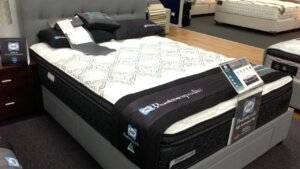The first things about buying a car in Australia is that cars are so much cheaper compared to Singapore. If you don’t live in an area well served by trains, trams or buses, owning a car to get around is more of a necessity than a status symbol.

Photo by Brydon McCluskey on Unsplash
A typical used car in reasonably good condition can be bought from $1,500 onwards. You would be spoilt for choice in websites like Carsales and Gumtree. You may even try buying from a private seller. However, it would pay to arm yourself with local knowledge before starting as there are many pitfalls if you are caught unawares.
The Consumer Affairs of Victoria is a good place to start.
Do also visit the VicRoads website if you intend to buy from a private seller.
For us, we chose to buy brand new from a local car distributor as we aren’t exactly car savvy when it comes to looking out for inherent or hidden faults in used vehicles. In addition, we reasoned that the dealership would take care of all necessary paperwork related to finance, registration and insurance etc.
In our minds, we narrowed our choices down to saloon cars that were made in Japan with manual transmissions (more fun to drive!). Having bought new cars in Singapore before, the buying experience in Melbourne wasn’t too different.
Walking into the showrooms of the popular Japanese car brands, the sales agents were polite but beneath their polished exteriors, they were hard at work deciphering whether we were tyre kickers or really out to make a purchase. Some of their sales tricks they use when negotiating the price include:
1) Having to ask their boss when asked for a discount (when in fact they could well make the call themselves)
2) Mentioning that they have the exact same car so as to justify your great choice
3) If you have an old car to trade in, the offset offered will be ridiculously low
4) Offering non- essential insurance extras such as tyre cover and roadside assist
As they say, knowledge is power. It certainly pays to do your own research on a shortlist of cars you are keen on. Car reviews are easily available on the Net, so are their indicative prices. The idea is not to walk into a car showroom and have the sales person steer you towards what they want sold with their well rehearsed spiel.
So how did we go with our own car purchase? We, of course, experienced the “let me go ask my boss if we can offer a better price” charade, except that the salesman did nothing of that sort and instead went for a coffee break at the back of the showroom (yes, I saw him holding a coffee mug).
One thing different, though, was that the sales person did not want to sit in the car when we did the test drive. All he did was to photocopy my driver’s licence and off we went. While many things may be examined up close while the car is sitting pretty in the showroom, we found that the few things that could only be determined during a test drive is, you guessed it, engine power and road noise.
Over the years, we have test drove our fair share of cars with overwhelming road noise and under powered engines. We learnt to stay away from cars with engine capacity of 1500 cc or less which tend to struggle with acceleration under a full load. If you drive mainly alone, smaller cc cars may just suit you well enough, though.
With more EVs (Electric Vehicles) coming onto the market, our next car just might be one. From what I read, electric motors have better torque (enabling faster pick up) and are heaps quieter. When that purchase finally happens, we will certainly blog about it!










